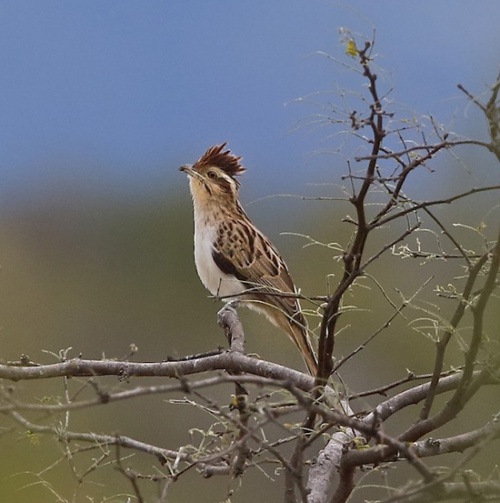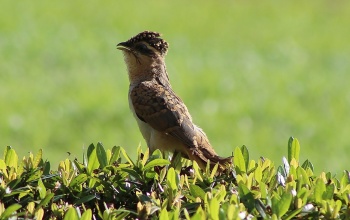- Tapera naevia
Identification
26–30 cm (10¼-11¾ in)
- White supercilium
- Dark malar stripe
- Greyish-brown upperparts with black streaks
- Dull white underparts
- Black crest (raised in display)
- Long, graduated tail
Sexes similar.
Distribution
Central and South America
Central America: Mexico, Guatemala, Belize, El Salvador, Honduras, Nicaragua, Costa Rica, Panama and Trinidad
South America: Colombia, Venezuela, Guyana, Suriname, French Guiana, Ecuador, Peru, Bolivia, Brazil, Paraguay, Uruguay and Argentina.
Taxonomy
Subspecies
Two subspecies are recognized[1]:
- T. n. excellens:
- T. n. naevia:
- Northern South America to Brazil, Argentina, Trinidad and Isla Margarita
Two additional subspecies, chochi and major are generally considered invalid[1].
Habitat
Dry and cloud forests and forest edges, scrubby areas and marshes.
Behaviour
Breeding
It is a brood parasite mostly of spinetails and thornbirds. They lay 1 or 2 white or bluish eggs which hatch after 15 days, fledging 18 days later.
Diet
The diet includes large insects.
References
- Clements, J. F., T. S. Schulenberg, M. J. Iliff, D. Roberson, T. A. Fredericks, B. L. Sullivan, and C. L. Wood. 2016. The eBird/Clements checklist of birds of the world: v2016, with updates to August 2016. Downloaded from http://www.birds.cornell.edu/clementschecklist/download/
- Avibase
- Wikipedia
- BF Member observations
Recommended Citation
- BirdForum Opus contributors. (2025) Striped Cuckoo. In: BirdForum, the forum for wild birds and birding. Retrieved 18 May 2025 from https://www.birdforum.net/opus/Striped_Cuckoo
External Links
GSearch checked for 2020 platform.1





